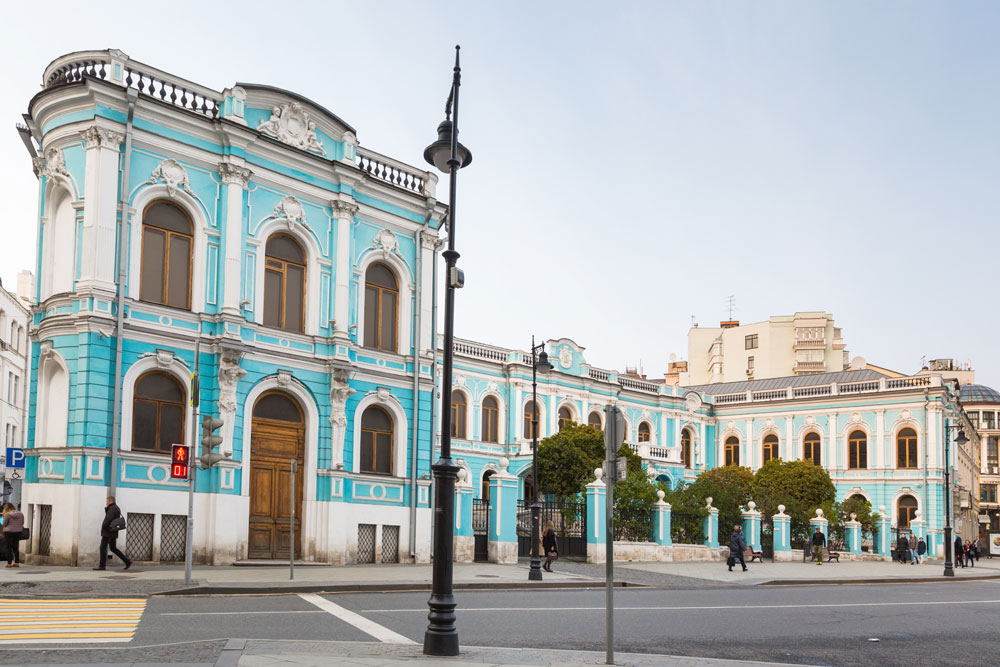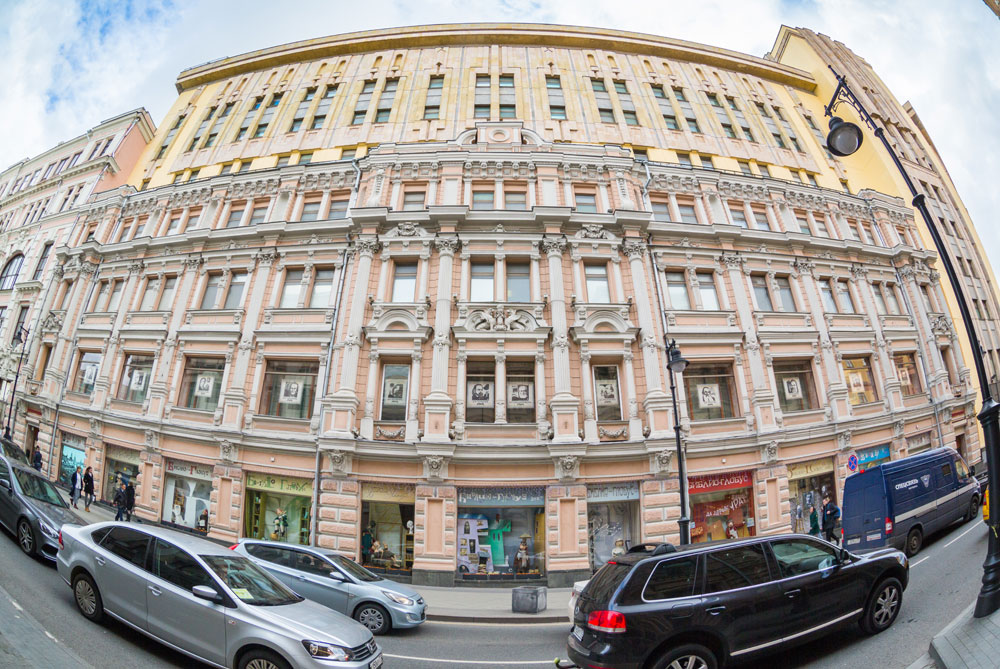Literary Myasnitskaya
No. 3. Ryazan metochion

In the 15th century this building housed the Godunov chambers, and later on the Ryazan metochion, where the Ryazan bishops lived. Under Catherine the Great it was home to the Secret Expedition, something akin to the secret police, which investigated a variety of issues of state. There were rooms where defendants, including Emelyan Pugachev, were held.
In 1883 the Moscow Spiritual Chancery was housed here. Its office kept an archive of people, events, Church property and goods, which was to become one of the most important texts documenting spiritual life in Russia.
The new building housed a shop owned by renowned diplomat, philanthropist, and glassware producer Yu. S. Nechaev-Maltsev. Nechaev-Maltsev went down in history as crucial to the construction of the Museum of Fine Arts (GMII) in Russia, donating over 2 million rubles towards its construction.
From 1819 the building was home to the Moscow Department of the Bible Society, and a bookshop.
After the revolution the building was transferred to the Supreme Soviet of National Economy (VSNKh). It housed the Fundamental Library of the Academic-Technical Department of the VSNKh, complete with reading room and reference and bibliographic department, which contained a compilation of literature on current technical specializations.
The library was intended for specialists, engineers, and students, and was built up along similar lines to the Kh S Ledentsov Library of the Society for the Advancement of Experimental Science and Practical Applications, and the Moscow Technical Library Society, founded before the revolution.
The library undertook extensive critical, bibliographical, and advisory work, responding to requests from readers. Well-known academic librarians studied and pursued careers in the library and it hosted lectures.
The library also had a publishing house, which produced technical journals and reviews on new developments in scientific and technical literature in this field. There was also a State Technical Publishers bookshop. From 1968, it housed the Information and Computing Center, now known as the State Public Scientific and Technical Library. The library currently holds over 8 million publications in the fields of natural and applied sciences, engineering, technology, mechanical engineering, ecology, and economics.
# Literary Myasnitskaya #Academic Myasnitskaya #Architectural Myasnitskaya
No. 7 Bldng 2. Chertkov House

Dolkorukov estate, in the 18th century ownership passed to the Saltykovs.
Prince Alexei Dolgorukov a tutor to young emperor Peter II, inherited the estate. In 1742 ownership passed to Moscow Governor Nikolai Saltykov and subsequently his heirs.
In 1831, the property was acquired by Col (Rtd) Alexander Chertkov, Moscow Province Marshal of Nobility and renowned bibliophile. Chertkov was a real connoisseur of printed primary sources on the history of Russian antiquities and made an invaluable contribution to the history of historical books. Chertkov was also a renowned numismatist, and was the first to classify Russian coins. He also carried out archaeological digs in the burial mounds near Moscow.
Chertkov’s son, Grigory, opened the library to the public following his father’s death in 1858, adding an archive and reading room to the main building. The library boasted a reference catalogue and was useful for academics, writers, and other enlightened people. In 1868 it had 13,412 compositions in 21,349 volumes.
Historian and literary critic Petr Bartenev was appointed director of the library, which Chertkov’s son bequeathed to the city. Bartenev used the funds left by Chertkov to produce the literary-historical publication ‘Russian Archive’, which detailed valuable academic studies and research into the history of materials – memoirs, letters, literary, artistic, and departmental documentary information on the cultural and political history of the nobility. Numerous valuable sources such as travel notes about Russia by European visitors were first published in Russian Archive.
At different times the building housed the Architectural Society, the Society for Gardeners, the Society for Russian History and Antiquity, the Society for Russian Doctors, the Savelevs publishing house, the A. A. Kartsev bookshop, and the Moscow Literary and Art Circle. This last brought together the crème de la crème of Moscow intelligentsia.
In 1871 the Chertkov library became the property of Pashkov House. After the revolution the collection was housed in Starosadsky Pereulok, where the State Public Historical Library was established. During the Soviet period, this building was home to a number of organizations and societies, including Znanie.
#Literary Myasnitskaya #Academic Myasnitskaya #Architectural Myasnitskaya #People
No. 6. Building rented out by N.D. Stakheev, architect M.F. Bugrovsky, 1897 (extension 1986)

In the first half of the 18th century, according to census information, this building was owned by Lieutenant Colonel Ivan P. Leontiev. In the early 20th century, the first floor of the building saw two bookstores appear – thanks to the philanthropist Nikolai D. Stakheev: Anna Seletskaya, and the well-known company A. A. Lang. Lang’s father, Johann, traded there for many years, and his shop was renowned for selling musical instruments, books, and music. Alexander Lang’s shop was particularly prized since it offered a wealth of literature in Russian and foreign languages. From 1895, the building served as Lang’s ‘private library’.
His grandson, Alexander A. Lang, gained fame as a symbolist poet under the pseudonym Miropolsky.
After the Great Patriotic War, the building housed the children’s store Detsky Mir (‘Children’s World’), which moved into the building opposite, to be replaced by books. Today, this building is known for housing the Biblio Globus bookstore and the Mayakovsky Museum.